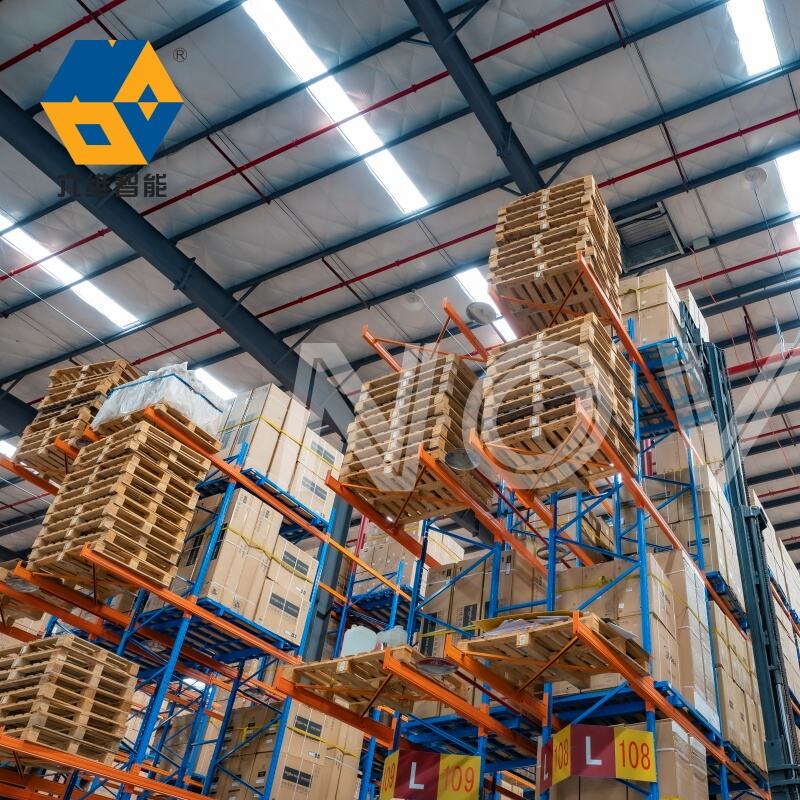Maximizing Warehouse Efficiency with Advanced Storage Solutions
In the ever-evolving landscape of warehouse management, drive in pallet racking systems have emerged as a revolutionary solution for businesses seeking to optimize their storage space. These sophisticated storage systems represent a significant advancement in warehouse organization, offering unprecedented storage density while maintaining accessibility to stored goods. As facilities face increasing pressure to maximize their available space, drive in pallet racking has become an indispensable tool for achieving operational excellence.
The modern warehouse environment demands solutions that can accommodate growing inventory levels without requiring facility expansion. Drive in pallet racking systems address this challenge by utilizing vertical space effectively and minimizing aisle requirements, ultimately leading to improved storage capacity and operational efficiency. This comprehensive guide explores how these innovative systems transform warehouse operations and deliver substantial benefits to organizations of all sizes.
Understanding Drive In Pallet Racking Fundamentals
Core Components and Design Features
Drive in pallet racking systems consist of several essential components working together to create a robust storage solution. The structure includes vertical frames, horizontal beams, and support rails that form lanes where forklifts can enter directly. This design eliminates the need for multiple aisles, as the system allows direct access to stored pallets through a common entry point.
The rails running along the depth of the system provide continuous support for pallets, while guide rails ensure safe forklift operation within the storage lanes. This configuration enables the storage of multiple pallets deep, maximizing the use of available space both vertically and horizontally.
Operational Mechanics and Functionality
The functionality of drive in pallet racking revolves around its unique loading and unloading process. Forklifts enter directly into the storage lanes, placing or retrieving pallets from their designated positions. This system operates on a last-in-first-out (LIFO) basis, making it particularly suitable for bulk storage of homogeneous products.
The design allows for dense storage configuration while maintaining structural integrity and safety. Load-bearing components are engineered to handle significant weight capacities, ensuring reliable performance even under heavy usage conditions.
Space Optimization and Storage Density Benefits
Maximizing Vertical Space Utilization
Drive in pallet racking systems excel at utilizing vertical space effectively. By stacking pallets several levels high, these systems can significantly increase storage capacity without expanding the facility's footprint. The vertical optimization capability often results in storage density improvements of up to 75% compared to traditional racking systems.
The ability to stack multiple pallets high while maintaining safe access for material handling equipment represents a crucial advantage in facilities with high ceilings. This vertical utilization translates directly into increased storage capacity and improved space efficiency.
Elimination of Multiple Access Aisles
One of the most significant advantages of drive in pallet racking is the dramatic reduction in required aisle space. Traditional racking systems need multiple access aisles between rows, consuming valuable floor space. Drive in systems eliminate this requirement by allowing forklifts to enter the racking structure directly.
This design characteristic results in substantially higher storage density, as more space can be dedicated to actual storage rather than access aisles. The reduction in aisle requirements can lead to space savings of up to 40% compared to conventional racking configurations.
Implementing Drive In Pallet Racking Successfully
Planning and Design Considerations
Successful implementation of drive in pallet racking begins with thorough planning and careful consideration of facility requirements. Key factors include ceiling height, floor load capacity, product characteristics, and material handling equipment specifications. A comprehensive analysis of these elements ensures optimal system design and performance.
Working with experienced providers who understand both the technical aspects and practical applications of drive in pallet racking is crucial. They can help develop customized solutions that align with specific operational needs while maximizing storage efficiency.
Safety and Maintenance Protocols
Maintaining safe operations requires strict adherence to established protocols and regular system maintenance. This includes proper training for forklift operators, regular inspections of racking components, and immediate attention to any damage or wear. Well-maintained drive in pallet racking systems can provide years of reliable service while maintaining optimal storage density.
Regular maintenance checks should focus on critical components such as guide rails, support beams, and impact protectors. Implementing a comprehensive maintenance program helps prevent operational disruptions and ensures long-term system reliability.
Future-Proofing Your Storage Solution
Scalability and Adaptation
Modern drive in pallet racking systems offer considerable flexibility for future expansion or reconfiguration. The modular nature of these systems allows for modifications to accommodate changing storage needs or new product lines. This adaptability ensures that the initial investment continues to deliver value as business requirements evolve.
Companies can plan for growth by implementing systems that can be easily expanded or modified. This forward-thinking approach helps maintain operational efficiency while supporting business development.
Technology Integration Opportunities
The evolution of warehouse management technology presents opportunities to enhance drive in pallet racking efficiency further. Integration with warehouse management systems, automated guided vehicles, and inventory tracking solutions can optimize storage operations and improve overall facility performance.
Advanced technologies such as sensors and monitoring systems can provide real-time data on storage utilization and system performance, enabling proactive maintenance and operational improvements.
Frequently Asked Questions
What types of products are best suited for drive in pallet racking?
Drive in pallet racking is ideal for homogeneous products with multiple pallets per SKU. It works particularly well for items with longer storage periods and those that don't require strict FIFO rotation. Products with stable shelf life and consistent demand patterns are excellent candidates for this storage solution.
How does drive in pallet racking compare to other high-density storage systems?
While push-back and drive-through systems offer similar density benefits, drive in pallet racking provides unique advantages in terms of cost-effectiveness and simplicity of operation. It offers superior storage density compared to selective racking while maintaining reasonable implementation and maintenance costs.
What are the key maintenance requirements for drive in pallet racking?
Regular maintenance includes inspecting structural components, ensuring proper alignment of guide rails, checking for damage from impact, and verifying the integrity of anchor points. It's recommended to conduct thorough inspections quarterly and address any issues immediately to maintain safe and efficient operations.

